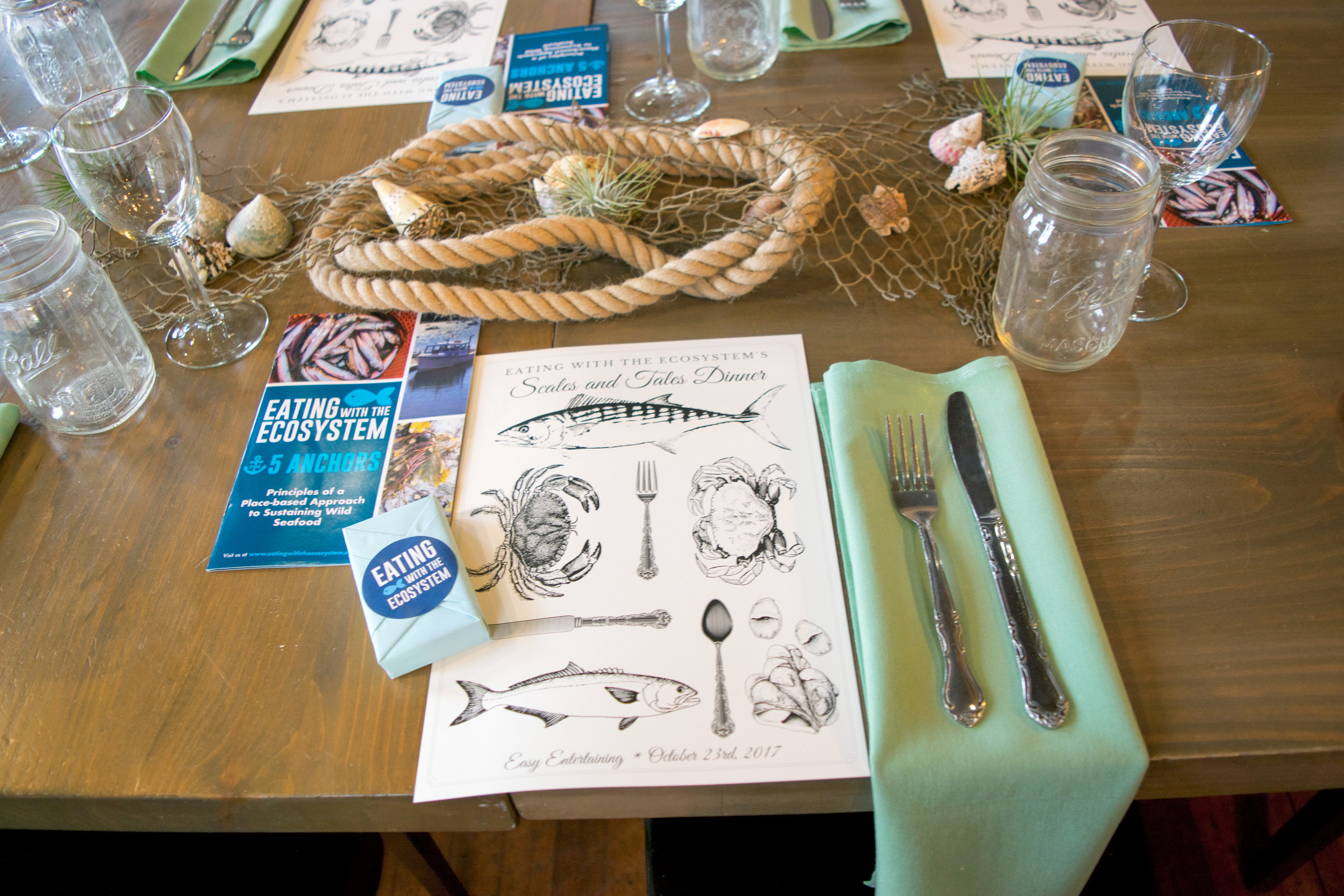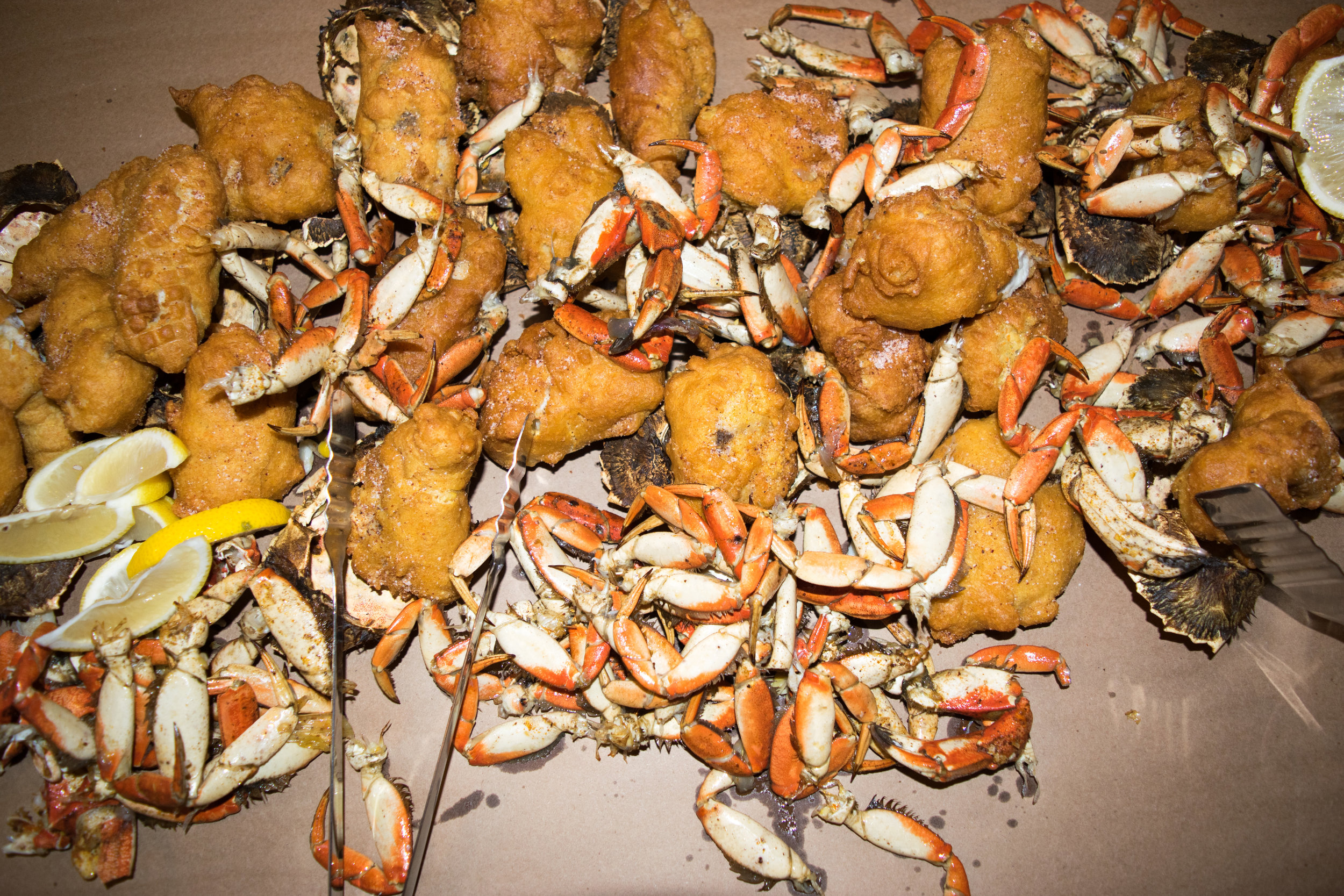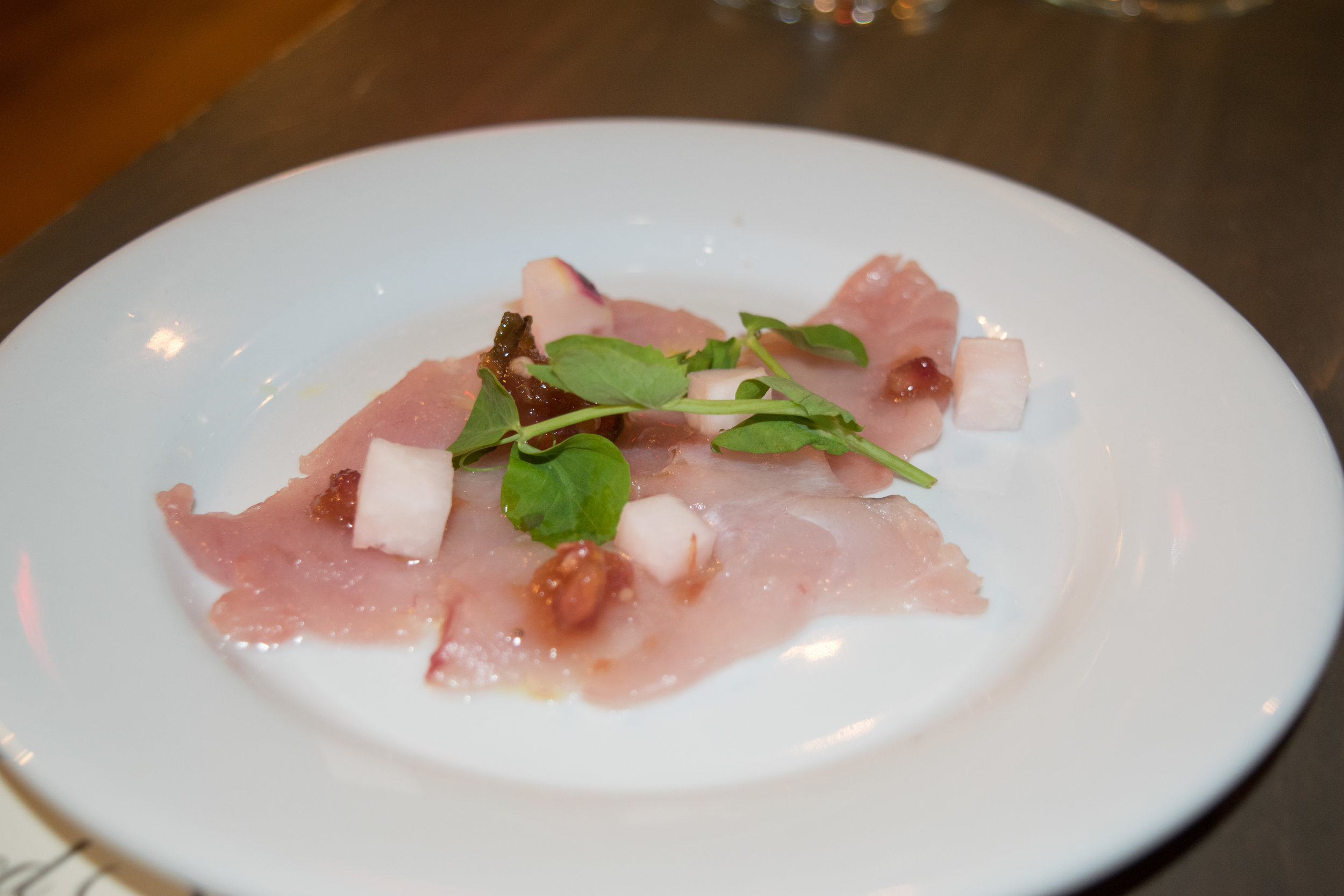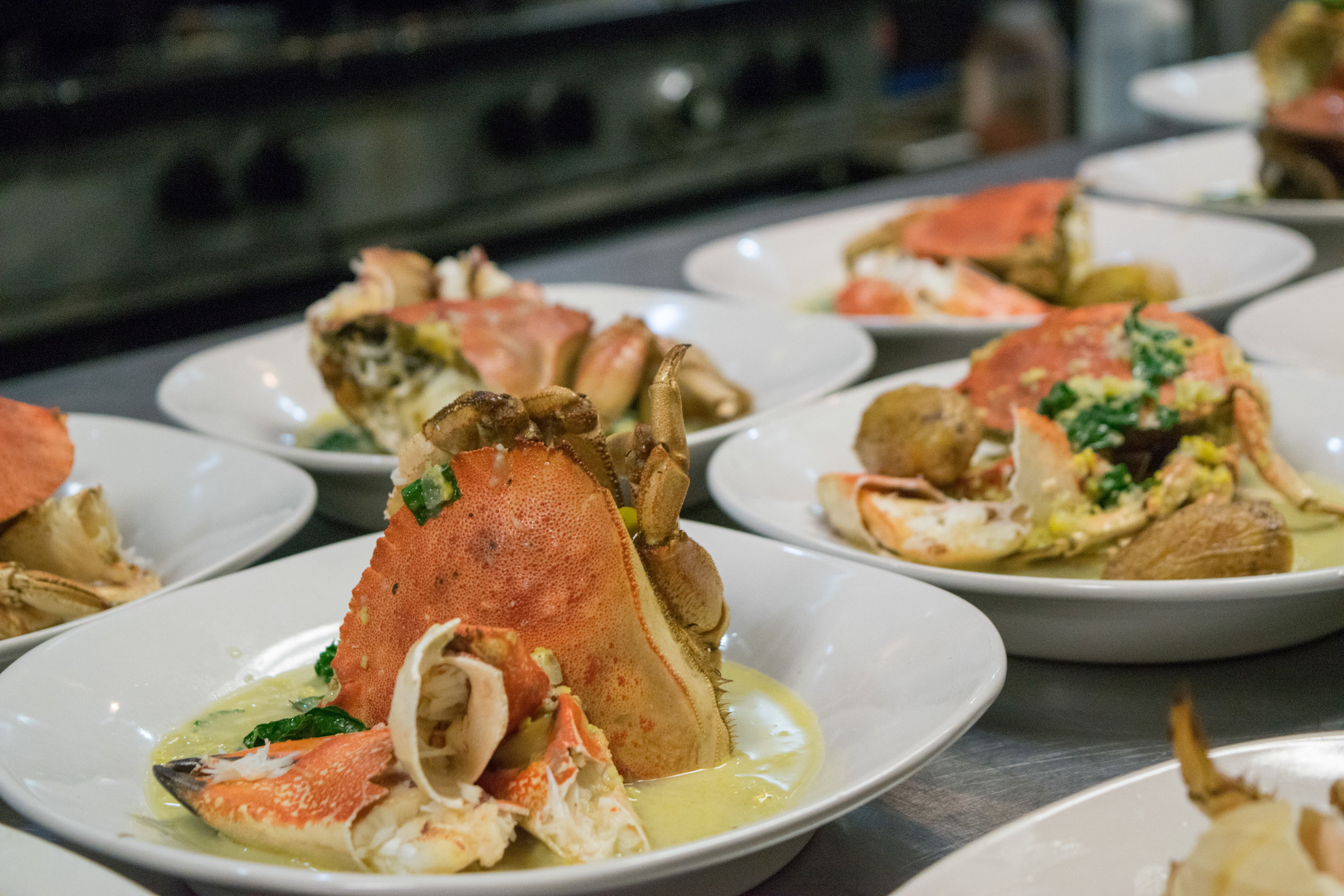Guest Blog by Pia Struzzieri
For many Rhode Islanders, eating seafood is a celebration of what it means to live in the ocean state. But, due in large part to climate change, the waters around Rhode Island are changing. Fish that once thrived in the Narragansett Bay are becoming scarcer and an increasing population of fisheries once found in warmer climates means that many consumers must redefine what it means to be a sustainable consumer of seafood.
Rhode Island Gillnetter Aaron Gewirtz
Eating With the Ecosystem, a local seafood project dedicated to helping Rhode Islanders make sustainable choices while supporting local fishermen, hosted a Scales and Tales Dinner at Easy Entertaining on October 23. The program charged chef Ashely Vanasse with the task of incorporating fisheries with a low environmental impact on the Rhode Island waters into an upscale dinner. Also in attendance was gillnetter Aaron Gewirtz, whose nets had pulled in both the bonito and bluefish on the table.
Arriving guests sipped sparkling wine and dined on fried bluefish and sand crab. The taste of bluefish, Gewirtz explained, has a reputation for tasting oily and is often described as fishy. Yet properly prepared the bluefish, especially served fried and simply garnished, has a complex, surprisingly fresh taste. Paired with the more familiar tender white meat of sand crabs, the bluefish were hugely popular. Gewirtz reminded attendees at the dinner that consumer demand can make an enormous difference on the success of sustainable fisheries. By ordering bluefish both when dining out and when making choices at the supermarket, Rhode Island foodies can be certain that their choices support both local industries and the ecosystems they rely on.
Chef Vanasse served Bonito crudo as the first course. The simple dish spotlighted the delicate flavor of the bonito fish, a taste not dissimilar to tuna. The second course featured Slipper Limpet, served as a sauce over homemade linguini. While hugely populous in Narragansett waters and simple to prepare, the slipper limpet is in low demand by Rhode Island consumers and often considered by fishermen to be a byproduct of other fisheries. The slipper limpet, a snail native to the Atlantic, has a rich, hearty meat making it a perfect pairing to savory comfort dishes like pasta.
Jonah crab dish in butter corn broth
Jonah crab (top) & Sand crab (bottom)
The sweet, tender meat of Jonah Crab made up the penultimate course of the meal, paired with local potatoes in a sweet onion and butter corn broth. Buttery and indulgent, the crab meat practically melted in attendee’s mouths as Eating with the Ecosystem’s Kate Masury gave an animated, hands-on demonstration on how to tell the difference between a Jonah crab and a Sand Crab. Demanding a large range of seafood from a number of local fisheries allows fishermen to capitalize on changing populations in the Narragansett waters. Masury encouraged attendees at the dinner to try to incorporate each of the new kinds of fish they’d tried that night into their menus at home.
The Scales and Tales dinners hosted by Eating with the Ecosystem aren’t the only opportunities for Rhode Islanders to broaden their horizons when it comes to seafood. Consumers can communicate their interest in sustainable, local catches wherever fresh seafood is sold. Serving fish like bluefish or Jonah Crab at one’s table, Masury explained, isn’t just good for the environment – a diverse menu can surprise dinner guests and create unexpected conversations. By purchasing, preparing, and serving local and sustainable catches, hosts can spark interest in eating with the ecosystem in their own dinner guests, creating a cycle of sustainability that could ensure the continued success of the Rhode Island fishing industry and allow us to adapt to a changing climate.







